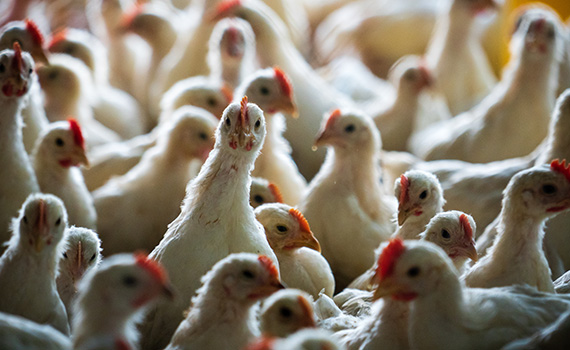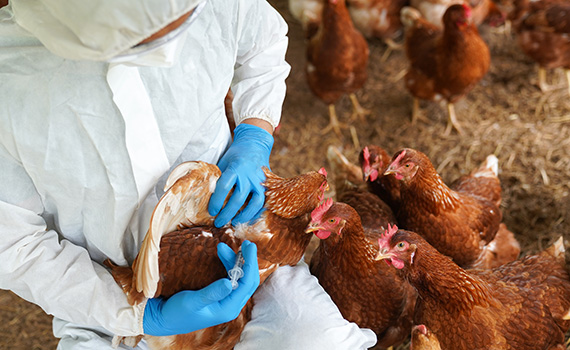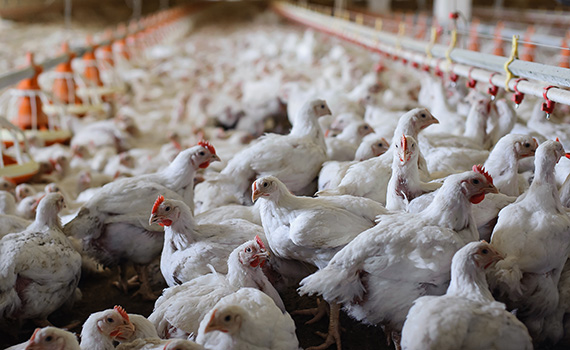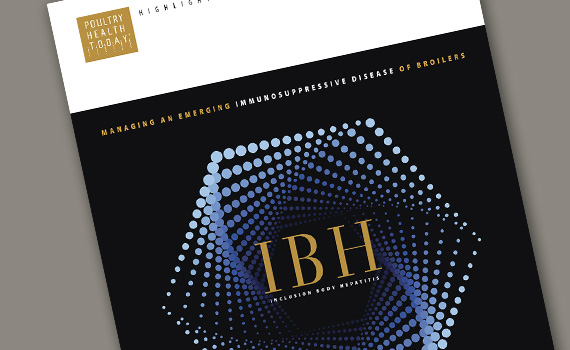Long-term control for IBH includes vaccines, management protocols

Inclusion body hepatitis (IBH) remains a nagging issue for broiler flocks, and it isn’t going away anytime soon.
“It seems that IBH is a primary pathogen now, and [its presence] seems to be very widespread,” Suzanne Dougherty, DVM, Pilgrim’s, told fellow participants of a roundtable — “IBH: Managing an emerging immunosuppressive disease of broilers.” The roundtable, organized by Zoetis, involved poultry-company veterinarians with firsthand IBH experience and academicians who’ve studied the disease.
“We’re definitely still struggling,” said Sara Throne, DVM, Simmons Foods. “It [IBH] seems to ebb and flow, and we haven’t always found out why.”
Future vaccine prospects
Autogenous vaccines to address IBH have proven to be a valuable tool and will continue to be part of a long-term control strategy, roundtable panelists agreed.
“From our experience, autogenous vaccination was very effective, and that was the key for us,” said Joel Cline, DVM, Wayne Farms. He credited autogenous vaccines for resolving IBH issues in the company’s north Alabama farms.
Cline relayed that, before administering a vaccine, it was common to place birds in 80 to 90 houses a week and have 10 of those report IBH cases. Following autogenous vaccination, the numbers would trickle to fewer and fewer cases until none were identified.
“We anticipate that IBH vaccination will continue and will be a big part of our control strategy going forward,” he added.
![]() Pilgrim’s also plans to continue its IBH autogenous-vaccine program, but Dougherty pointed out that a commercial IBH vaccine based on adenovirus serotype 8b would be a welcomed tool. “Or, a combination commercial IBH with infectious bursal disease (IBD) and reovirus would be excellent,” she said. “Until that happens, we will continue to use our autogenous program.”
Pilgrim’s also plans to continue its IBH autogenous-vaccine program, but Dougherty pointed out that a commercial IBH vaccine based on adenovirus serotype 8b would be a welcomed tool. “Or, a combination commercial IBH with infectious bursal disease (IBD) and reovirus would be excellent,” she said. “Until that happens, we will continue to use our autogenous program.”
Optimizing immunity
Making efforts to ensure good foundational immunity can also help reduce the impact of IBH. This is especially important with IBD, according to Guillermo Zavala, DVM, PhD, Avian Health International.
“When it comes to IBD, this being probably the most important component in the whole picture of IBH, you do want to protect the pullet against IBD, “ he said. “Typically, the industry will use a recombinant vaccine and/or live-attenuated vaccines [for IBD], with two or three doses given during rearing, followed by one or two killed vaccinations. In doing so, you want to make sure your killed vaccines represent the relevant viruses that circulate in broilers.”
Targeting specific IBD variants is also important, he said, adding, “We know that most of what’s isolated today in broilers is represented by the other variants, but more importantly, the AL2-type variants of IBD and others. The better you prepare that pullet for her to transfer sufficient immunity to protect broilers early on during the first 2 to 3 weeks of age, that broiler will not be as susceptible to IBH problems. That’s very important.”
Ensure vaccine coverage
Autogenous vaccines are doing double or even triple duty today, with farms adding other viruses into the mix. “The volume in that autogenous-vaccine bottle is becoming more of a premium,” said Holly Sellers, PhD, University of Georgia Poultry Diagnostics and Research Center. “We’re also adding reoviruses — not just one but most of the time several ⸺ as well as one or two IBDs in different combinations.”
This is a sound strategy, but if the birds’ response appears to be declining or broilers from vaccinated breeders break, then it’s time to investigate further.
“Basic serological tools can help evaluate how the birds are responding to the viruses in the vaccine,” Sellers noted. “This can help you determine if you are getting immunity to last for the span of time that you need it to.”
Even if breakthrough cases are not an issue, there’s merit in periodic surveillance testing, the roundtable participants said. It’s a way to ensure that the IBH serotype in the vaccine aligns with the one that birds are encountering in the field.
Although autogenous vaccines are important, management also plays a critical role in limiting IBH’s impact. “Whether it’s the stressors that come with not having optimal management every single time or if it’s other disease stressors ⸺ whether it be laryngotracheitis or mycotoxin issues or other challenges ⸺ it’s managing the entire environment of that bird,” Throne said.
Looking ahead
Zavala endorsed the need for targeted diagnostics, not just to keep track of the IBH serotype circulating in a farm or flock but also to track the predominant serotype industry-wide.
“Regarding IBH autogenous vaccines, 8b is the predominant type today. But we don’t know what it’s going to be 5 years from now,” he said. “Today we have the molecular tools to do that.”
However, there remains a void in serological diagnostics or surveillance testing. “We have ELISA kits that detect group 1 adenovirus antibodies, but we don’t know what [serotypes] the birds are responding to. Is it serotype 1, 4, 7 or what?” Zavala said.
The industry needs a tool to sample birds in the field to determine whether they are seroconverting against the IBH type circulating within the flock, Zavala noted. “That would be very useful,” he concluded.
Editor’s Note: Poultry Health Today editors have developed a booklet with highlights of the roundtable discussion. To download a free copy, click here.
Posted on November 3, 2022
 We’re glad you’re enjoying
We’re glad you’re enjoying














